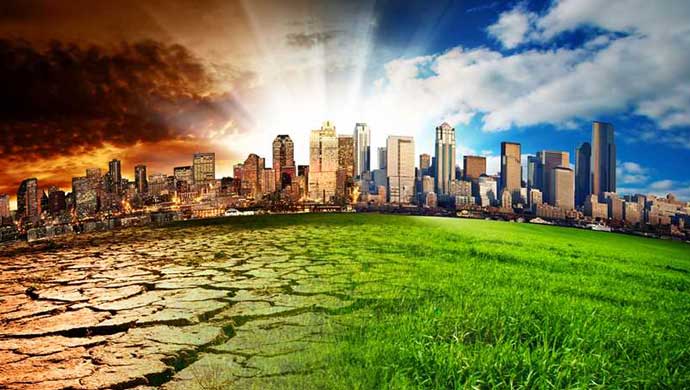
CLIMATE RISK:- Only PROPER PLANNING can insure against the inevitable extremities of nature. Climate change is one of the major problem of today’s world. According to the united nations environment programme emissions gap report that was released at the time of 2020 when the covid-19 crises dominated the world it set new records in terms of rise in extreme weather events , including wildfires and hurricanes, and in the melting of glaciers and ice at the both poles. According to the report, despite a brief dip in carbon dioxide emissions caused by the pandemic , the world is still heading for a temperature rise in excess of 3 degree Celsius this century.
One of the most effected area due to climate change is including Himalayan region or Himalayan glaciers it is the second largest body of ice in the world covers about 17% of the mountain area that is about 1,12,767 sq. km. and most of the higher regions are snowbound throughout the year. Global warming deplete glaciers year by year. According to the estimate of Indian govt. nearly 5,218 glaciers in Himalayas would be impacted, Gangotri glacier has receded by almost one- third km in just 13 years, Another glacier that is Pindari glacier retreats at rate of 13 meters a year already. Gangotri glacier is receding at an annual rate of 30 meters. Most of the large rivers of India including Ganga, Yamuna are originated from Himalayan region and there source of water is melted glaciers and these rivers covers most of the northern India and in upcoming future occurance of melting of glaciers at fast rate will be a major alarm of floods in northern parts of India and it will be prevented by decline global warming throughout the world.
The “greater Himalayan region”, sometimes called the “roof of the world”, is notice impacted by climate change. Indian metrological department is likely to have 10 weather radars for the Himalayan region and also an airborne leader observation to measure glacier volume periodically. Scientists of Indian metrological department and the Indian institute of tropical meteorology cautioned that the impact of the climate change on the Himalayas will increase in the form of cloudbursts, extremely heavy rain, landslides, glacial like outburst food. As we get another example of Hindu kush Himalayas experienced a temperature rise of about 1.3 degree Celsius during 1951-2014 compared to India’s average temperature which has risen by around 0.7 degree Celsius during 1901-2018. According to the “Assessment of climate change over the Indian region”, a report published by the ministry of earth sciences.
The only way to preserve our environment is to rapid decline in deforestation and instant increase planting trees and it should be a moral duty of every citizen of world.